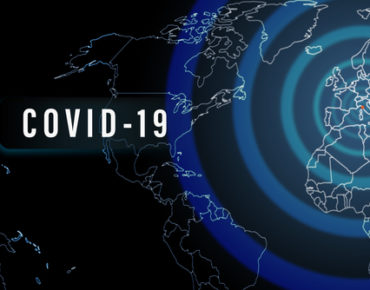Digital Twins of Cities Simulate Coronavirus Public Policy Impacts

President Trump’s stated desire that the country be “opened up” from social distancing by Easter (April 12) is a hotly debated coronavirus issue in political, media and healthcare circles. But an AI-driven answer to the controversy may come in part from the University of Virginia’s Biocomplexity Institute, whose digital twins simulation platform could help state and local governments better understand how the contagion is spread and anticipate where hot spots will happen. The ultimate goal: enable public officials predict the public impacts of coronavirus policies, such as imposition – and lifting – of stay-at-home orders.
According to a story in yesterday’s Wall Street Journal, researchers at the University of Virginia’s Biocomplexity Institute and Initiative will make available in April to government officials at no expense an AI system that “can project not just how many infections or deaths might result, but also show how many intensive-care-unit beds or ventilators could be needed in a specific city.”
A division director at the Institute told the Journal he and his staff are working “to refine the system so that it can also project the economic impact of certain Covid-19 policy decisions, such as orders to close stores or mandates that employees work from home.
“Certain economic issues are very local. [By] shutting down a mall or all the entertainment places…a local economy may be so dependent on that that they would essentially go broke. And that may not be something they have the appetite for,” said the Institute’s Madhav Marathe.
 UVA’s Biocomplexity Institute is not new to the study of pandemics. Its Network Systems Science and Advanced Computing (NSSAC) division has worked with the U.S. federal government for 15 years on the H5N1 outbreak, H1N1 in 2009, MERS in 2012, Ebola in 2014, Zika in 2016 and the recent Ebola outbreak in Congo, according to the NSSAC web site.
UVA’s Biocomplexity Institute is not new to the study of pandemics. Its Network Systems Science and Advanced Computing (NSSAC) division has worked with the U.S. federal government for 15 years on the H5N1 outbreak, H1N1 in 2009, MERS in 2012, Ebola in 2014, Zika in 2016 and the recent Ebola outbreak in Congo, according to the NSSAC web site.
The 85-person Institute in January began using its platform to build COVID-19 simulations based on the efforts of disease experts, social scientists, software programmers and engineers from Persistent Systems, which develops digital transformation platforms and solutions.
The AI platform is based on digital twins of urban areas that include mirrors of transportation networks, street grids, buildings, dwellings and movements and activities of people – city replicas referred to as “synthetic populations.” The more than 40 sources of data used to create these replicas are then combined with epidemiological data from the World Health Organization and the Centers for Disease Control & Prevention to examine the spread of contagion. Machine learning algorithms then simulate pandemic outbreaks, based in part on past epidemic patterns within individual urban areas, and selects the scenarios most likely to happen.
Chris Barrett, Institute executive director, told the Journal its simulations are intended to “manage the size of this epidemic to match the [health care] resources available.”
According to the NSSAC, “We are conducting simulations to forecast disease spread to ascertain the specifics: when, where, and the intensity of the outbreak. Based on these results, we are identifying the most efficient ways to estimate and allocate scarce medical resources. To this end, we have developed support tools and dashboards to help healthcare providers and the general public to better evaluate the status of the epidemic.”
Among the problems simulated by the platform: “the risk of importation of COVID-19 to the U.S. and other countries, location of likely clusters within the U.S., and estimation of various disease progression parameters” – “a variety of counterfactual and what-if scenarios and considering the impact of social interventions.”











